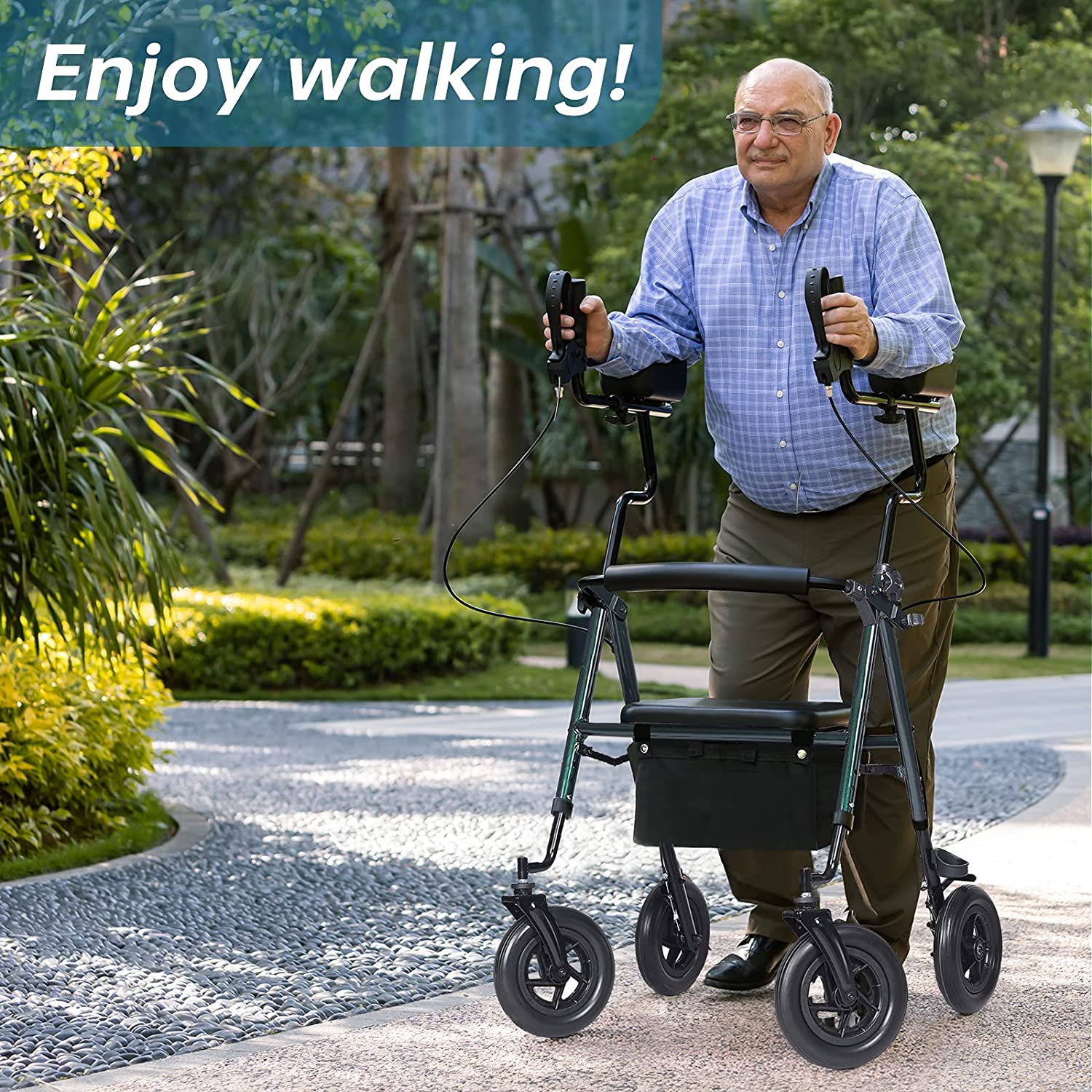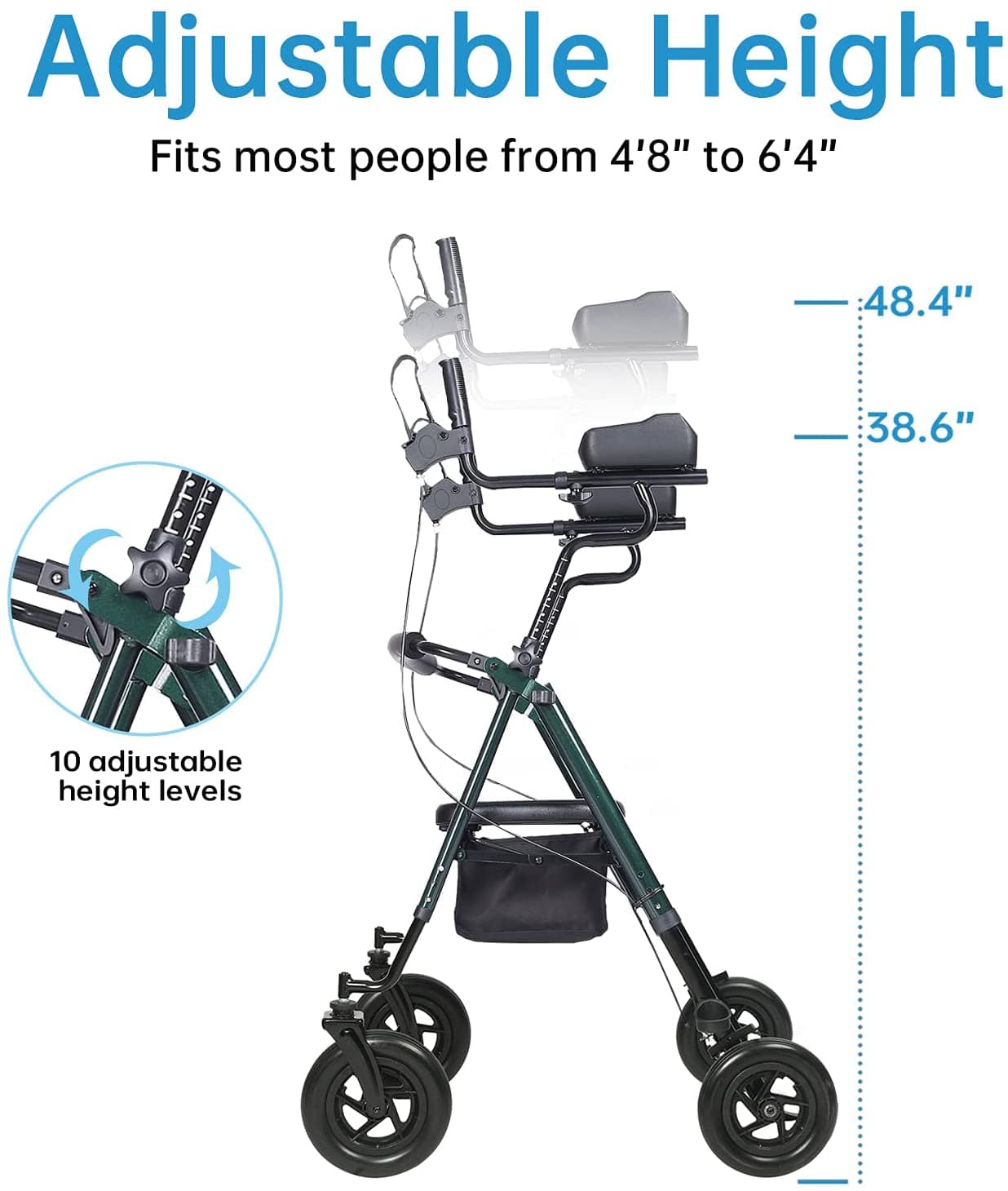Can a Rollator Walker Help with Osteoarthritis?
Mar 28, 2025
If you have osteoarthritis, you know how frustrating it can be when simple tasks like walking become painful. Stiff joints, aching knees, and limited mobility can make it tough to stay active. That’s where a rollator walker can come in handy! But is it really the right solution for osteoarthritis? Let’s talk about how rolling walkers can help, what to look for, and how to use one effectively.
What is Osteoarthritis?
Osteoarthritis (OA) is the most common type of arthritis. It happens when the cartilage that cushions your joints wears down over time. This leads to pain, stiffness, and swelling, especially in weight-bearing joints like the knees, hips, and lower back. Unfortunately, OA doesn’t just go away, but the good news is that the right mobility aid—like a rollator walker—can make a big difference in keeping you moving comfortably.

ELENKER Upright Rollator Walker HFK-9236T4
How Can a Rollator Walker Help with Osteoarthritis?
A rollator walker, also known as a rolling walker, is a mobility aid designed to provide support and stability while walking. It typically has four wheels, hand brakes, and a built-in seat for resting. For people with osteoarthritis, these features can be incredibly helpful. Here’s how:
Reduces Joint Strain – A rollator walker supports some of your body weight, reducing pressure on sore joints, especially in the knees and hips.
Improves Stability – OA can make you feel unsteady, and a rolling walker gives you something sturdy to hold onto, lowering the risk of falls.
Encourages Movement – Staying active is crucial for managing OA. Using a rollator walker can help you keep walking longer without excessive pain.
Provides a Seat for Resting – A rollator walker with a seat lets you take breaks whenever needed, preventing overexertion.

ELENKER Upright Rollator Walker HFK-9236T4 with padded seats
Helps with Posture – Many people with OA hunch forward to relieve joint pain, which can lead to back problems. A rolling walker helps you stand upright and walk more naturally.
Choosing A Right Rollator Walker for Osteoarthritis
Not all rolling walkers are the same! If you have osteoarthritis, here’s what to look for:
Lightweight but Sturdy Frame – A rollator walker should be easy to maneuver but strong enough to support you.
Comfortable Hand Grips – Padded handles reduce strain on your hands and wrists, which is especially important if you have arthritis in your fingers.
Adjustable Height – The walker should be at a height that allows you to walk upright without hunching over.
Easy-to-Use Brakes – Since rollators have wheels, you’ll want hand brakes that are simple to use and responsive.
Padded Seat and Backrest – If you need to take frequent breaks, a rollator walker with a seat and backrest will provide extra comfort.
Large, Sturdy Wheels – Bigger wheels help you move more smoothly over different surfaces, reducing jarring impacts on your joints.
How to Use a Rollator Walker Safely with Osteoarthritis
Using a rolling walker the right way can make a huge difference in your comfort and mobility. Here are some tips to keep in mind:
Adjust It to the Right Height – The handles should be level with your wrists when your arms are relaxed at your sides. This helps you maintain good posture and avoid back strain.

ELENKER Upright Rollator Walker HFK-9236T4 with Adjustable Height
Walk at a Comfortable Pace – Don’t rush! Move the walker slightly ahead of you, then step forward. Let the rollator support your weight instead of leaning heavily on it.
Use the Brakes When Stopping – Always lock the brakes before sitting down or standing up to prevent the walker from rolling away.
Sit Down Carefully – When using a rollator walker with a seat, make sure you’re on even ground, lock the brakes, and sit down slowly.
Take Breaks When Needed – The beauty of a rollator walker is that you can stop and rest whenever you need to. Listen to your body!
Daily use of ELENKER Upright Rollator Walker HFK-9236T4
Are There Any Downsides to Using a Rollator Walker?
While rollator walkers are great for many people with osteoarthritis, they’re not perfect for everyone. Here are a few things to consider:
Not Ideal for Severe Balance Issues – If you have serious balance problems, a standard walker (without wheels) or a cane may provide better support.
Requires Some Hand Strength – You need to be able to squeeze the brakes to stop safely. If you have arthritis in your hands, make sure the brakes are easy to use.
Not for Every Terrain – While rolling walkers work well on sidewalks and smooth floors, they can be tricky on rough terrain or thick carpets.
Who Should Consider Using a Rollator Walker?
If you have osteoarthritis and find that walking is becoming painful or difficult, a rollator walker could be a great solution. It’s especially helpful if:
✔ You have joint pain that limits your mobility.
✔ You feel unsteady on your feet and worry about falling.
✔ You want to stay active but need a little extra support.
✔ You find yourself needing frequent rest breaks while walking.
Osteoarthritis can make daily activities challenging, but you don’t have to give up on staying active. A rollator walker can provide the support, comfort, and confidence you need to keep moving without unnecessary pain. Whether you’re walking around your home, going to the store, or enjoying a stroll in the park, rolling walkers can make life a lot easier.
If you’re considering getting a rollator walker with a seat, make sure to choose one that fits your needs and is comfortable to use. And as always, check with your doctor or physical therapist to make sure it’s the right choice for you!
So, are you ready to take steps—literally—toward a more active and comfortable life? A rollator walker just might be the mobility boost you need!






